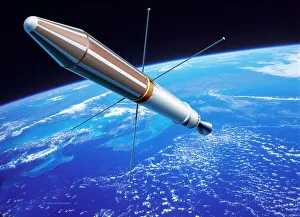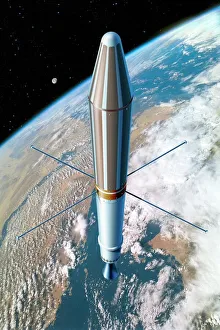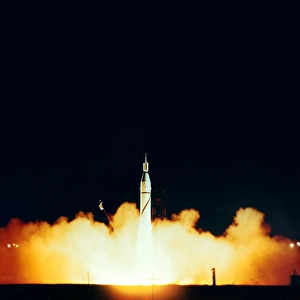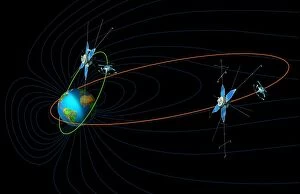Van Allen Radiation Belt Collection
The Van Allen radiation belt, named after the renowned scientist James Van Allen, is a fascinating phenomenon that surrounds our planet
All Professionally Made to Order for Quick Shipping
The Van Allen radiation belt, named after the renowned scientist James Van Allen, is a fascinating phenomenon that surrounds our planet. It was first discovered in 1958 when Explorer 1 became the first satellite to orbit Earth. This groundbreaking achievement provided scientists with valuable data about this mysterious belt. Imagine Explorer 1 gracefully gliding through space, capturing our imaginations as it ventured into uncharted territory. Its presence in orbit marked a significant milestone in human exploration and opened up new avenues of scientific discovery. Artwork depicting Explorer 1 floating amidst the vastness of space reminds us of the awe-inspiring beauty and complexity of our universe. The conceptual drawing showcasing Earth's magnetic field intertwined with the Van Allen Radiation Belt further emphasizes its importance. These radiation belts are composed of charged particles trapped by Earth's magnetic field, forming two distinct regions: an inner and outer belt. They act as protective shields against harmful cosmic rays emanating from the sun and other celestial bodies. Through subsequent missions like Explorer 4 launch, we gained more insights into these enigmatic belts. Scientists have been able to study their behavior during radiation storms using probes specifically designed for this purpose – Radiation Belt Storm Probes (RBSP). As we delve deeper into understanding these belts' dynamics, we become increasingly aware of their significance for both space exploration and human safety. Their existence has prompted advancements in spacecraft design to shield astronauts from potentially hazardous levels of radiation during long-duration missions beyond Earth's protective atmosphere. Explorer 1's pioneering journey paved the way for future explorations while unraveling some mysteries surrounding our planet's natural defenses against cosmic threats. As we continue to explore outer space, let us not forget how crucial it is to comprehend and respect phenomena like the Van Allen radiation belt that shape our cosmic environment.









